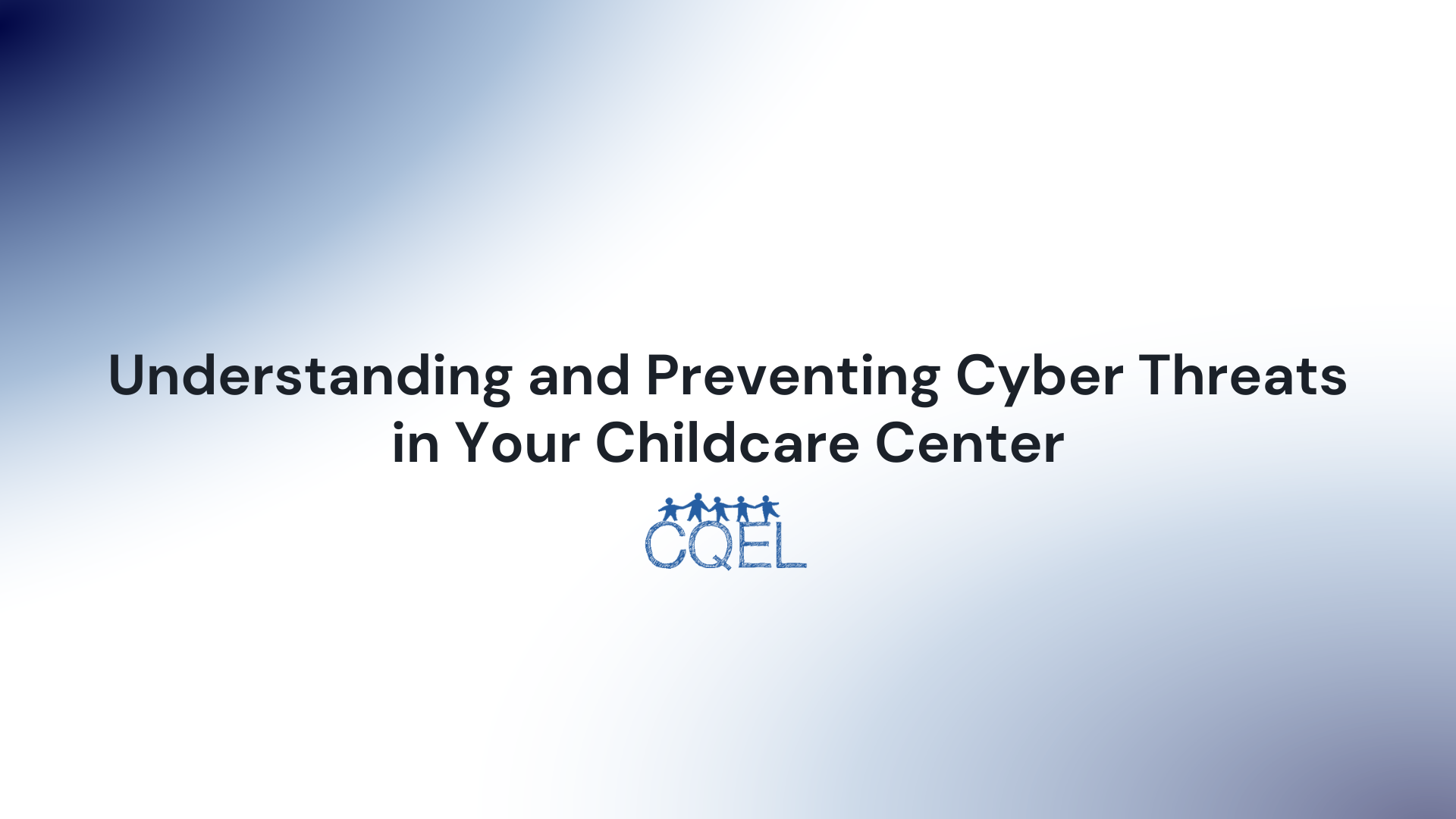Understanding and Preventing Cyber Threats in Your Childcare Center
The cybersecurity risks in a childcare setting are numerous, from maintaining digital records of children's personal information to utilizing learning apps and digital tools.

In an age where digital technologies pervade every aspect of our lives, even childcare centers aren't immune to the perils of cyber threats. The cybersecurity risks in a childcare setting are numerous, from maintaining digital records of children's personal information to utilizing learning apps and digital tools. This article explores these risks and presents strategies for understanding and preventing cyber threats in your childcare center.
Recognizing the Cyber Threat Landscape
The first step in cybersecurity is recognizing potential threats. Malware, phishing, ransomware, and data breaches are prevalent cyber threats that can compromise your childcare center's sensitive data. The Federal Communications Commission offers a Cyberplanner tool that can help you understand these threats and the damage they can cause.
Establishing a Cybersecurity Policy
Crafting a robust cybersecurity policy is vital for any childcare center that uses digital tools. This policy should outline your center's strategies for data protection, staff training, incident response, and recovery. The Federal Trade Commission provides guidance on how to create a comprehensive cybersecurity policy.
Implementing Strong Password Practices
Strong passwords are the first line of defense against cyber threats. Teach staff to use complex, unique passwords and to change them regularly. Consider using a password manager to secure these passwords. The National Institute of Standards and Technology offers a Cybersecurity Framework that provides best practices for password management.
Securely Managing Children's Data
Childcare centers handle sensitive data, including children's personal information and health records. Ensure this data is securely stored, transmitted, and disposed of when no longer needed. Encrypt sensitive information, and only share data on a need-to-know basis. The U.S. Department of Education's Privacy Technical Assistance Center provides resources on managing student data securely.
Educating Staff on Cyber Threats
Staff education is crucial for preventing cyber threats. Regular training on recognizing phishing emails, safe internet use, and data protection practices can significantly reduce the risk of a cyber-incident. Resources like the Cybersecurity and Infrastructure Security Agency's Cyber Essentials toolkit provide valuable training materials.
Keeping Software and Systems Updated
Ensure all devices, software, and systems used in your childcare center are up-to-date. Regular updates not only provide new features but also patch security vulnerabilities that cybercriminals could exploit. The Cybersecurity & Infrastructure Security Agency's tips on keeping software and systems updated can guide your efforts.
Creating a Response Plan
Despite all precautions, breaches can occur. Having a response plan in place can minimize the damage and speed recovery. The plan should include steps to identify, contain, eradicate, and recover from an incident, and how to notify affected parties. The Federal Trade Commission's Data Breach Response Guide can assist in preparing an effective response plan.
Making Cybersecurity a Priority
In a digital age, cyber threats are an unfortunate reality. By understanding the risks and taking preventative measures, childcare centers can protect themselves and the children they serve from the potentially devastating effects of cyber incidents. Prioritizing cybersecurity is not just a business necessity—it's a critical aspect of providing safe, secure, and effective care to our youngest learners.
